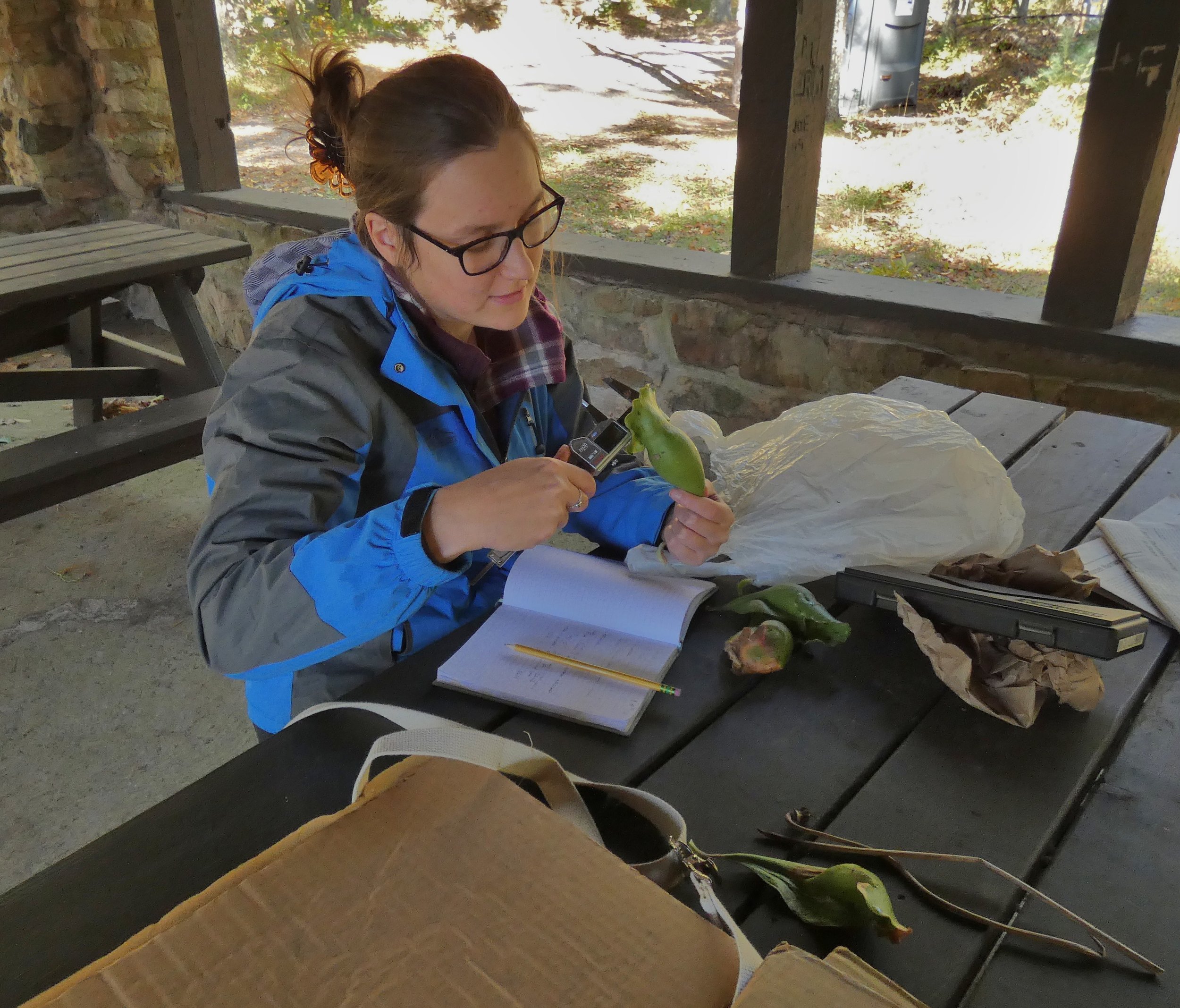by Walter Kittredge, Friends board member and Senior Curatorial Assistant at the Harvard University Herbaria
This year was a very exciting time for plant research in Parker Forest. I was joined this summer by Wheaton College graduate Giovanna Bishop to collect mosses and lichens, of which very little is known. Our forays focused on what grows on rock outcrops, in vernal pools and streams throughout the Forest. So far 120 mosses have been found, including rarer ones like stairstep moss and bug-on-a-stick. Among the 50 lichens we found were the warty toadskin lichen and the red-tipped British soldier lichen. One of the surprises was finding rare calcium-loving mosses on the concrete of dams and the old foundation of the Stearns Pond beach house. Another surprise was the great diversity of lichens in the power line right-of-way in the Lovell Parcel in North Andover, with many kinds of cup and reindeer lichens present. Every hour spent in the field collecting was followed by many more hours in the lab identifying the specimens using microscopes and field guides. The work continues with lots more to discover and document how common or rare these are in the Forest.
Last winter I found some insect eating pitcher plants frozen in the ice along the boggy margin of Berry Pond. These uncommon plants only grow locally in the glacial kettle bogs found around Bear, Berry and Pine Hole Ponds. I went back in June to try and find them, struggling through shrubby thickets of winterberry holly. I was rewarded by the sight of twenty robust plants in flower, one of which I collected to press and dry to make a specimen for the Herbarium. This fall I returned once more with a British graduate student from Loughborough University, Ellen Goddard. Ellen is studying the bacteria living in the pitcher’s water, and how they affect the plant’s growth by decomposing the insects that are trapped by the pitchers. We found six plants that had made fruit, and lots of young plants, good signs for the future of these unique plants.
Ellen Goddard measuring pitcher plant leaves


